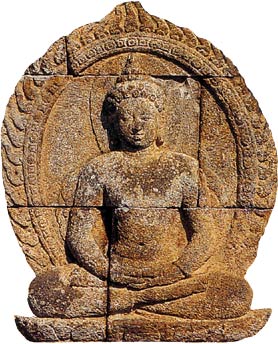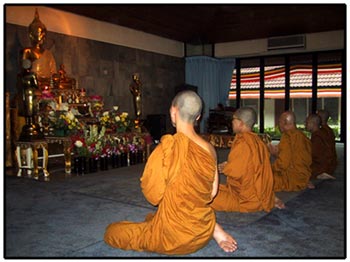 |
|
|
| |
||
| |
|
|
| |
||
|
|
||
| |
||
|
The best known of these temples is Borobudur one of the Seven Wonders of the World. Borobudur represents three views of the universe according to the Indian Vajrayana tradition. The apex of the structure is a stupa, which represents the concept of Emptiness or Sunnata. Every year on the full moon in May, the Vesak celebration (called Tri Suci Waisak in Bahasa Indonesian), commemorating the birth, enlightenment, and passing away of the Buddha is held at Borobudur. During the rule of the Majapahit kingdom between 13th to 15th century, Buddhism and Hinduism coexisted peacefully. After the fall of Majapahit, Islam was brought to Indonesia by traders from Gujarat, India. The influence of Buddhism started to decrease substantially after that, and was mainly confined to the areas of Eastern Java and Bali. The Revival of Buddhism
Buddhism is
one of five religions recognized by the Indonesian government, besides
Islam, Catholic, Protestant, and Hinduism. According to a census
conducted in 1990, the majority of the population is Moslem (around
87%). About 1.8 million people (which was slightly more than 1%
of the population) are Buddhism. The breakdown of followers of different
religions in Indonesia is shown in the table below:
Provinces
with relatively high percentage of Buddhists are Jakarta, Riau,
North Sumatra, and West Borneo. The majority of Buddhists now
practice in the Theravadin tradition. Two of the large Buddhist
monasteries are located in North Jakarta (Sunter) and West Java
(Pacet). Unfortunately, because Confucianism and Taoism are not
recognized in the Constitution, followers from these two religions
also call themselves “Buddhist” (therefore, the actual
numbers of Buddhists are believed to be less than the official
figure). |
| |
|||||||
| |
|||||||
| |
Copyright © 2008 - BDEA Inc. & BuddhaNet. All rights reserved. | |
|
|
|
|
|
| |
|||||||
| |
|||||||

